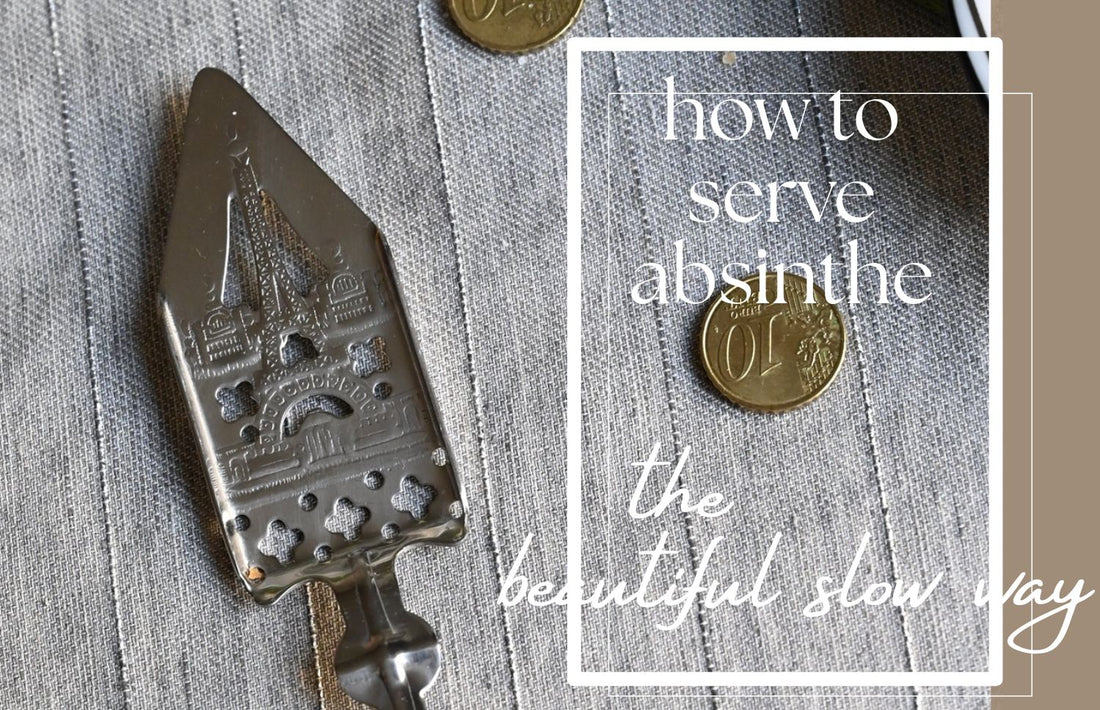
How to Serve Absinthe (The Beautiful, Slow Way)
Share
How to Serve Absinthe (The Beautiful, Slow Always Sunday Way)
There are few drinks more mysterious, theatrical, and romantic than absinthe. Once banned, now beloved, it has an old-world charm that's made for slow sipping and even slower evenings. And if you're going to serve it, you may as well do it beautifully.
Here’s how to turn an absinthe moment into a ritual worth remembering – the Always Sunday way.
1. Start with the Right Glass
Forget novelty shot glasses or clunky tumblers. Traditional absinthe deserves traditional absinthe glasses – like our set of two Traditional Absinthe Glasses. Designed in the classic Pontarlier style, they feature a rounded reservoir to help measure your pour perfectly. They’re weighty, elegant, and yes – they make the green fairy look her best.

2. Step One: Pour the Absinthe
Pour roughly 25-30ml of absinthe into the glass. The reservoir at the bottom makes this easy to eyeball. Don’t overfill – the magic is in the mix.
3. Step Two: Place the Spoon and Sugar Cube
Absinthe is traditionally served with a slotted spoon and sugar cube. Lay your absinthe spoon across the rim of the glass and pop a sugar cube on top (we love raw cane for that old-school feel).
4. Step Three: The Slow Drip
Now the moment everyone waits for. Slowly drip ice-cold water over the sugar cube until it dissolves and the drink louche’s – that’s when the clear green absinthe clouds into a soft, milky haze. It should be roughly 1 part absinthe to 3-5 parts water. Go slow. Sip slower.

Make It a Moment
We’re not here for rushed drinks. Pair your absinthe ritual with soft candlelight (these painted taper candles are perfect), a hand-poured ceramic dish for your sugar cubes, and the right soundtrack.
Hosting? It makes a brilliant after-dinner moment, especially when served with a few squares of dark or mint chocolate.
Final Tip: Absinthe is strong. It’s also meant to be savoured. So go slowly, serve it beautifully, and enjoy the ritual as much as the drink.

Got some more questions? Here's a little bit more in our Absinthe FAQ's:
Where does absinthe come from?
Illicit, mystical, hallucinatory. Absinthe has a colourful history of sex, violence, and artistic clarity. The spirit gets its name from Artemisia Abenthium, a perennial herb commonly known as wormwood, and is often flavoured with other botanicals including sweet anis and fennel. It’s been said to be hallucinogenic (although that may just be the incredibly high alcohol content, between 45 and 70%), increase sexual desire (not if you’re too drunk on absinthe we imagine), and to fight infection. During the 1800’s it was bestowed with medicinal properties by French doctors who prescribed absinthe as antimalarial to returning soldiers from Algeria and then popularity as a drink of the middle and upper classes grew as it became commercialised across Switzerland, France and the rest of Europe.
Why is absinthe green?
When absinthe is distilled it is initially clear and is known as White Absinthe or “Blanche”. It’s only during a second round of distillation, when the chlorophyll-rich botanicals are added, that the iconic shade of green becomes apparent.
Did absinthe get banned?
It was actually not banned in the UK, it simply fell out of favour but as the First World War began it was outlawed in France, banned in the US in 1912 and then many other European countries followed. It was blamed for society’s problems of increased debauchery, a rise in admissions to mental asylums and even outright murder when Swiss labourer Jean Lanfray shot his pregnant wife and two children in a drunken rage on August 28th, 1905. Despite having also drunk copious amounts of wine, brandy, creme de menthes and cognac on that day, it was the two glasses of absinthe that he’d consumed that shouldered the blame. Within days a petition to ban absinthe in Switzerland gained over 80,000 signatures and moral panic escalated so much that that it was banned in Switzerland in 1908.
